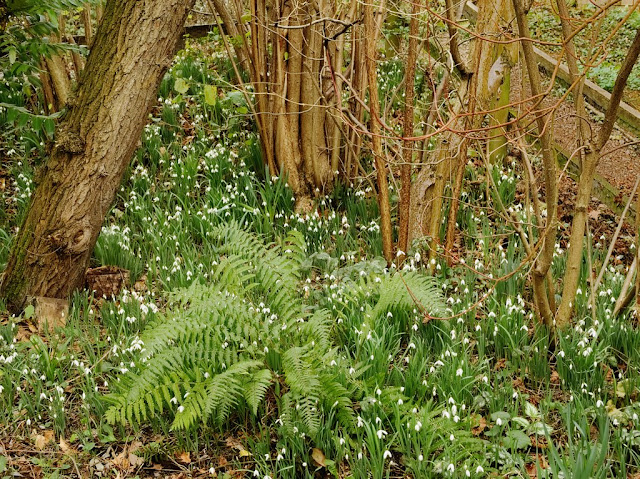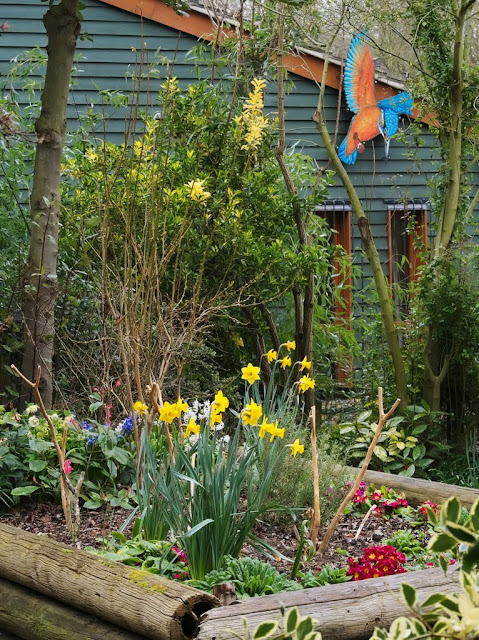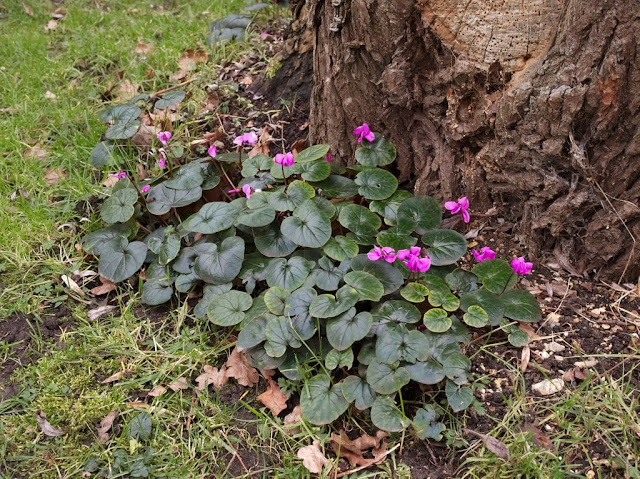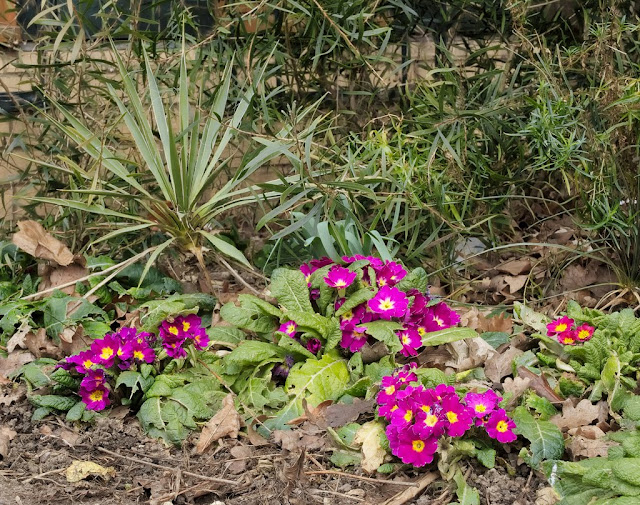 |
| Sensory Garden - 25 January 2016 |
The more colourful of the two gardens in early spring is the Sensory garden. Besides beds of snowdrops and daffodils, there are a couple of large hellebore plants. The individual flowers, like the one above, seem far more impressive when seen singly, than when hanging their heads amongst the vegetation.
 |
| Sensory Garden - 25 January 2016 |
There are beds of snowdrops right round the garden, mostly growing beneath trees and bushes, like those shown above.
 |
| Sensory Garden - 20 March 2016 |
The daffodils shown here are in the raised central bed of the garden, and, are particularly eye catching when seen through from the path which runs along the western edge of the garden.
The daffodils pictured here had been flowering for over a month by the time that I took this picture. A spell of cooler weather ('below average for time of year' as the weather forecasters put it) had put the brakes on everything that was growing. It was not cold enough to do any damage, but cool enough to put further development on hold.
This example of prolonged blossom should help lessen my tendency to rush about, always trying to capture any plant the moment it starts to flower. My justification for such behaviour is to point to those that got away (or nearly so): hawthorn blossom ruined by rain after two days; apple blossom that deteriorated almost before it was out; and, elderflower nearly missed because the flowers, once out, lasted such a short time. Examples of sustained flowering such as forget-me-knots and green alkanet, both of which flowered for weeks and weeks, did nothing to prevent the next panic - finding ripe blackberries if I remember rightly.
Folklore has it that bringing either snowdrops or daffodils into the house had dire effects on the poultry yard: both had the power to prevent eggs from hatching. They were also associated with disasters in other ways. The hanging heads of the snowdrops were seen as a symbol of death. Daffodils, if first seen hanging towards the observer, were also an omen of disaster. Is it coincidence that both these early flowers are associated with bad luck and calamity? My source for these tales is: 'Discovering the Folklore of Plants' by Margaret Baker.
 |
| Garden - 25 January 2016 |
The second garden is much more interesting later in the year. But, a couple of things did catch my eye. The first was this clump of cyclamens growing around the base of the tree.
 |
| Garden - 25 January 2016 |
The second was this row of rhubarb growing by the fence. This is always a tendency to concentrate on the colourful flowers and ignore the vegetables. But plants without flowers can be every bit as interesting, as in the contrast between this picture and the previous one. The cyclamen, to me, epitomise spring: this is an image of the here and now, and a culmination of growth. On the other hand, the rhubarb is full of promise and speaks of summer. It is the start of things to come.
 |
| Visitor Centre - 28 February 2016 |
My final image is not from either of the gardens, but from a little triangular border between the path and the walls of the Visitor Centre. There were polyanthus in the sensory garden, but they looked drab and world weary, even at the beginning of March. The flowers shown here were a lot more vibrant.
Next: Mists
No comments:
Post a Comment